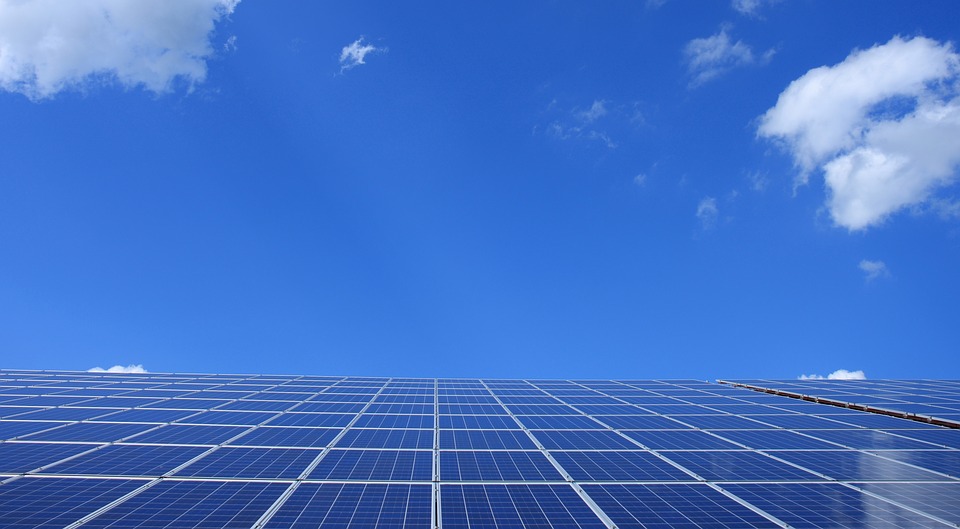10 Ways to Make City More Sustainable
Climate change task force plan offers 'big ideas' to make Milwaukee more sustainable and equitable.
A new plan identifies 10 “big ideas” to improve the economic and environmental well-being of Milwaukee. The ideas include everything from strategies to expand renewable energy to reducing food waste.
The draft proposal from the City-County Task Force on Climate and Economic Equity is focused on reducing greenhouse gas pollution, increasing racial equity and improving the long-term prosperity of the city.
The plan aims to create and support a path to reduce greenhouse gas emissions by 45% by 2030 and achieve net zero emissions by 2050. It would address racial and economic equity issues in part by supporting the creation of “green jobs” that pay at least $40,000 per year and focusing recruitment on people of color.
The 10 big ideas include making energy-saving upgrades to existing houses, building new net-zero energy homes, benchmarking the efficiency of commercial buildings, expanding the number of people walking, biking and using mass transit, electrifying vehicles, expanding the amount of renewable energy, protecting and restoring natural areas, reducing food waste, establishing a resilience ambassador program and creating a green jobs accelerator.
Each of the ideas includes underlying data to evaluate the current environment and how to measure progress. It also includes specific strategies and opportunities to achieve the idea.
The plan also includes support for a number of things already in the works, including building a trail network along 30th Street railroad corridor, adding bus rapid transit lines and adjusting zoning laws.
“We welcome public feedback on the plan to make sure we got it right,” said city sustainability director Erick Shambarger in a statement.
The Common Council is expected to review a final plan in early 2023.
Task force members include Shambarger, Ted Kraig, Freida Webb, Janet Meissner Pritchard, Julie Kerksick, Linda Frank, Pamela Fendt, Pamela Ritger de la Rosa and Rafael Smith. The task force is co-chaired by alderman-turned-budget-director Nik Kovac, Wisconsin State Assembly representative and former county supervisor Supreme Moore Omokunde, county board chair Marcelia Nicholson and supervisor Priscilla E. Coggs-Jones. Bruce Wiggins, Jennifer A. Evans and George Martin led work groups, but were not formally on the task force. Several dozen people participated in the task force’s efforts and are thanked in the plan.
A full copy of the draft plan is available on Urban Milwaukee.
The “10 Big Ideas”
As included in the draft plan.
1. Green Jobs Accelerator – Creating clear pathways to increase the number of people of color employed in family-supporting green jobs. This includes public outreach, coordination with existing training providers, clear career ladders from entry-level employment to progressively higher skills, public benefits agreements on government-funded projects, and support for businesses owned by people of color working in this field.
2. Healthy Home Energy Upgrades – Making weatherization and renewable energy retrofits more affordable as part of holistic housing improvements that also address lead-based paint and other health hazards.
3. New Net-Zero Energy Homes – Building healthy, affordable, net-zero energy homes on Milwaukee’s scattered vacant lots. The project envisions supporting a new factory in Milwaukee that constructs modular housing components year-round to both reduce the cost of new home construction and restore manufacturing job opportunities for people of color.
4. Commercial Building Energy Benchmarking + Building Performance Standards – Requiring large commercial building owners to annually
track and report on their energy use and develop longer-term building performance standards to gradually reduce GHGs from commercial buildings.
6. Electrify Transportation – Building a network of publicly-accessible EV charging stations, increasing EV adoption rates through public outreach, and transitioning municipal fleets to EVs, hybrids, and other low-emissions vehicles.
7. Greening the Electric Grid – Transitioning the electric grid to carbon-free sources of energy through advocacy for better renewable energy policy with state utility regulators, the direct purchase of renewable energy from new utility-scale projects, and expansion of rooftop solar in the city.
8. Protect and Restore Nature in the City – Protecting existing natural areas and increasing the amount of green space and trees on private and public property through expansion of the Green Schoolyards program and removal of excess asphalt in commercial parking lots that also contribute to urban heat islands
9. Food Waste Reduction – Reducing food waste and feeding hungry people through public-private partnership called FEED.
10. Resilience ambassadors – Partnering with trusted neighborhood-based organizations to connect underserved communities with available tools and resources to make their homes and neighborhoods more resilient to climate change.























Hummmm It seems the number one way would be to have a city where there are NO murders. It seems that many cities in Wisconsin accomplice that and yet Milwaukee because of 1 2 3 4 5 reasons ( fill in the numbers) is violent and no one addresses the reasons for that violent behavior. NOT even Urban Milwaukee is willing to engage in the two books that will begin to provide a pathway out of the violence. Book 1 Why They Kill and Book 2 The Body Keeps the Score again call me so the conversation can begin 414 403 1341
All great ideas. Getting buy-in from elected officials and department heads is a good next step. Identifying funding sources.